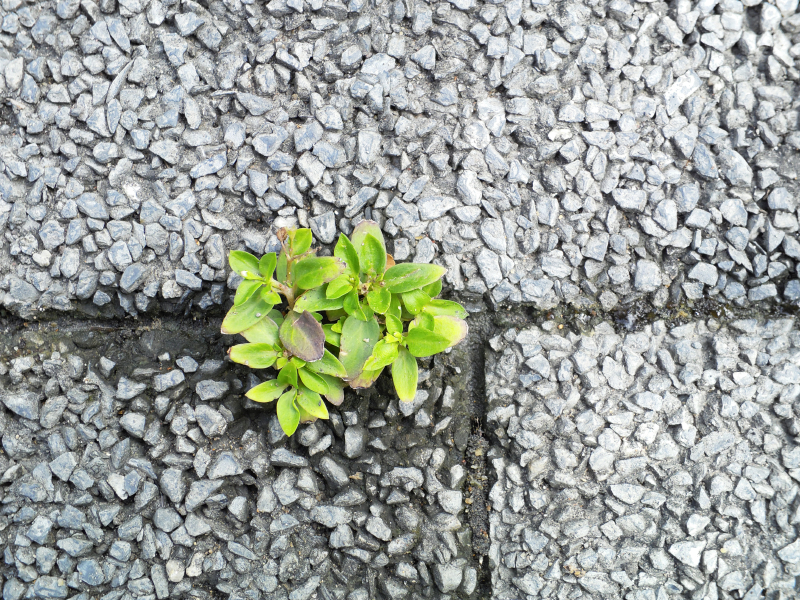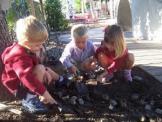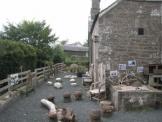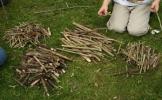Bright Ideas
Children in Small and Urban Spaces Need Nature Too!

Several weeks ago I made a presentation at a California state-wide conference on the topic of bringing nature into small and urban spaces for children. I started the presentation by asking members of the audience to describe the current outdoor environments at their centers, and if they had faced any problems with bringing nature into these spaces.
Unfortunately, I was not surprised when almost half of the audience revealed that they had little to no nature in their indoor and outdoor spaces, and didn't have many ideas to bring their students into the outdoors to facilitate their learning in nature.
Here are a few easy tips to make your small yard (or any sized outdoor playscape) into a nature-rich one!
1) Create a digging area.

2) Go beyond the asphalt, concrete, and rubber.

For the creative teacher or director, though, this is not a problem. You can create a wood or rock border enclosing an area of the asphalt. Fill the area with 3-6" of dirt, and Voila! you have created a natural area for loose parts, digging, and other activities. If drainage is a problem, buy some cheap drainage composite boards. Set them down and cover with a thin protection of cement or plywood before laying the gravel or dirt. The water will drain out through the composite board as the children enjoy their "new" space.
3) Every playscape needs a secret garden!
We all need a little respite once in a while; children are no exception. As relief from all the busy things going on, pick a quiet place at the edge or corner of the yard. Place three to five planters, with flowers or plants that are at least one foot tall, leaving behind a space even as small as 3 feet x 3 feet. Lay down some tree cookies, dirt, gravel, or sand as a base. You will have created a Secret Garden for the children, while still allowing yourself the ability to see them play. They will enjoy the space as if they're in their own, private world! As a variant on this idea you can plant a small stand of bamboo or willow to create a natural screen.
4) Add a terrarium or aquarium indoors.
Inside the classroom, consider adding a terrarium or aquarium with frogs, crickets, snakes, or fish. Children love and enjoy the responsibility of caring for and nurturing other living beings.
5) Go beyond plastic!

If you are in an urban setting or have a teeny tiny outdoor space, what creative things have you done to connect children to nature? Share your ideas in the comments below!
Also, consider attending the second annual Children Learning with Nature Training Institute from June 29-July 1 for early childhood educators, teachers, naturalists, designers, and others interested in connecting children to nature. This inspiring event brings in expert speakers from all over the world to share about the best skills and resources to use immediately in your work with children. You will learn to create and facilitate inspiring activities for your students in both indoor and outdoor environments, in order to foster positive, constructive relationships with the Earth . . . and each other! We already have folks from 13 states, 3 Canadian provinces, and 6 countries joining us. Visit our website to register!
About the Author
Paul Roberts is a principal at PR&P Architects, which provides architecture, planning, and outdoor playscapes for children, and is the organizer of the Children Learning with Nature Training Institute.

